Adi Tala (or Adi Talam) is one of the most popular talas or rhythms used in Carnatic (South Indian Classical) music. In Sanskrit (आदि ताल), it literally means “primary rhythm”.
It is an 8 beat pattern, where this pattern repeats over and over for the duration of the composition. Each beat is called an Akshara. Adi Talam belongs to the Suladi Sapta Tala system of classification, and its formal name is Chatusra Nadai, Chatusra Jaati Triputa Tala. (Suladi Sapta Tala system would be the topic of another blog post!)
The beat pattern is itself divided into 3 parts (also called Angas), as follows:
4 beats | 2 beats | 2 beats
a Laghu, which is 4 beats, followed by 2 Dhruthams, each of which is 2 beats.
Laghu | Dhrutham | Dhrutham
In the Suladi Sapta Tala system, the Triputa Tala pattern is a Laghu followed by 2 Dhruthams. While the duration of the Dhrutham is fixed at 2 Aksharas, the duration of the Laghu depends on the Tala family. In the Chatusra Jaati family, a Laghu has a duration of 4 Aksharas. Hence Adi Tala has a Laghu of 4 beats followed by 2 Dhruthams of 2 beats each.
Figure 2: Adi Talam structure representation in Talanome
S R G M | P D | N Ṡ
Ṡ N D P | M G | R S
Subdivisions
Figure 3: Adi Talam details in Talanome
Gestures or Kriyas – Keeping Track of Time
These beats are measured, or kept track of by the musician by using hand gestures – clapping the palm of the hand on the thigh (as carnatic concerts are usually performed with the musicians sitting cross legged on the stage), counting with the fingers, or turning the hand over and clapping the back of the palm on the thigh, as shown in this short video.
The first part of Adi Talam consists of clapping of the palm, followed by counting with the pinky, ring and middle fingers (in that order), to represent the Laghu of 4 beats. The second part of Adi Talam consists of clapping of the palm followed by turning the hand over and clapping the back of the palm, to represent the Dhrutham of 2 beats. This pattern is repeated again for the third part of Adi Talam to represent the last Dhrutham.
Common Time
Similar to Adi Talam is the 4/4 time signature in Western music, also known as Common Time. It is widely used in most forms of popular western music. It is also referred to as Imperfect Time and can be written by the symbol C. The symbol does not refer to “Common Time” as is commonly believed – rather, it is derived from a broken circle used in music notation from the 14th to the 16th centuries, where the full circle represented the “perfect time”
.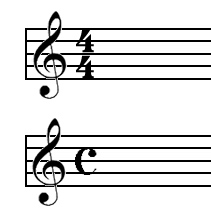
Time signatures define the amount and type of notes in each measure. The 4/4 in Common Time means that there are 4 quarter (1/4) notes in each measure. It does not mean, however, that only quarter notes must be used – it just means that the number of beats in each measure add up to the equivalent of 4 quarter notes.
For example, each measure can have one whole note, or two half notes, or four quarter notes, or 2 quarter notes and 1 half note, or a quarter note rest, a half note and a quarter note, as show in the example below.
In Talanome, you are not restricted to Carnatic Talas – in fact, you can create any rhythm pattern you like by using the “Make Your Own Talam/Choose Your Own Talam” feature. Talanome comes pre-loaded with tons of extra talas, including the 4/4 Common Time. Simply choose it from the Tala Selector and jump into your favorite Western piece with a Common Time signature!
In a subsequent blog post, I will talk about how you can use the “Make Your Own Talam” feature to create any rhythm patterns that are not already present in Talanome, and how you can share them with others.
Enjoy!
Sridhar

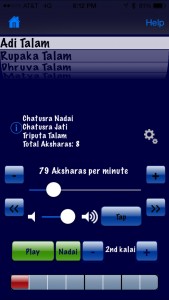

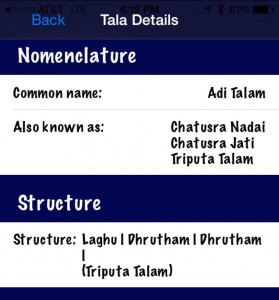
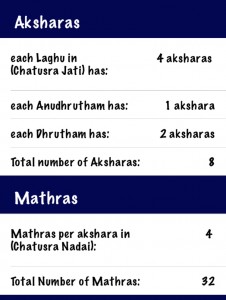
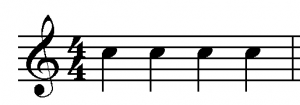
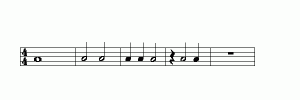

3 responses to “Adi Talam and Common Time”
thanks for the detailed explanation about the thalams
Very good article on Adi Talam / Chatusra Nadai…
Can you also please post one on Adi Talam / Tiara Nadai?
Thanks
Glad you liked it! Thank you! 🙏 And thanks for the suggestion for future articles.